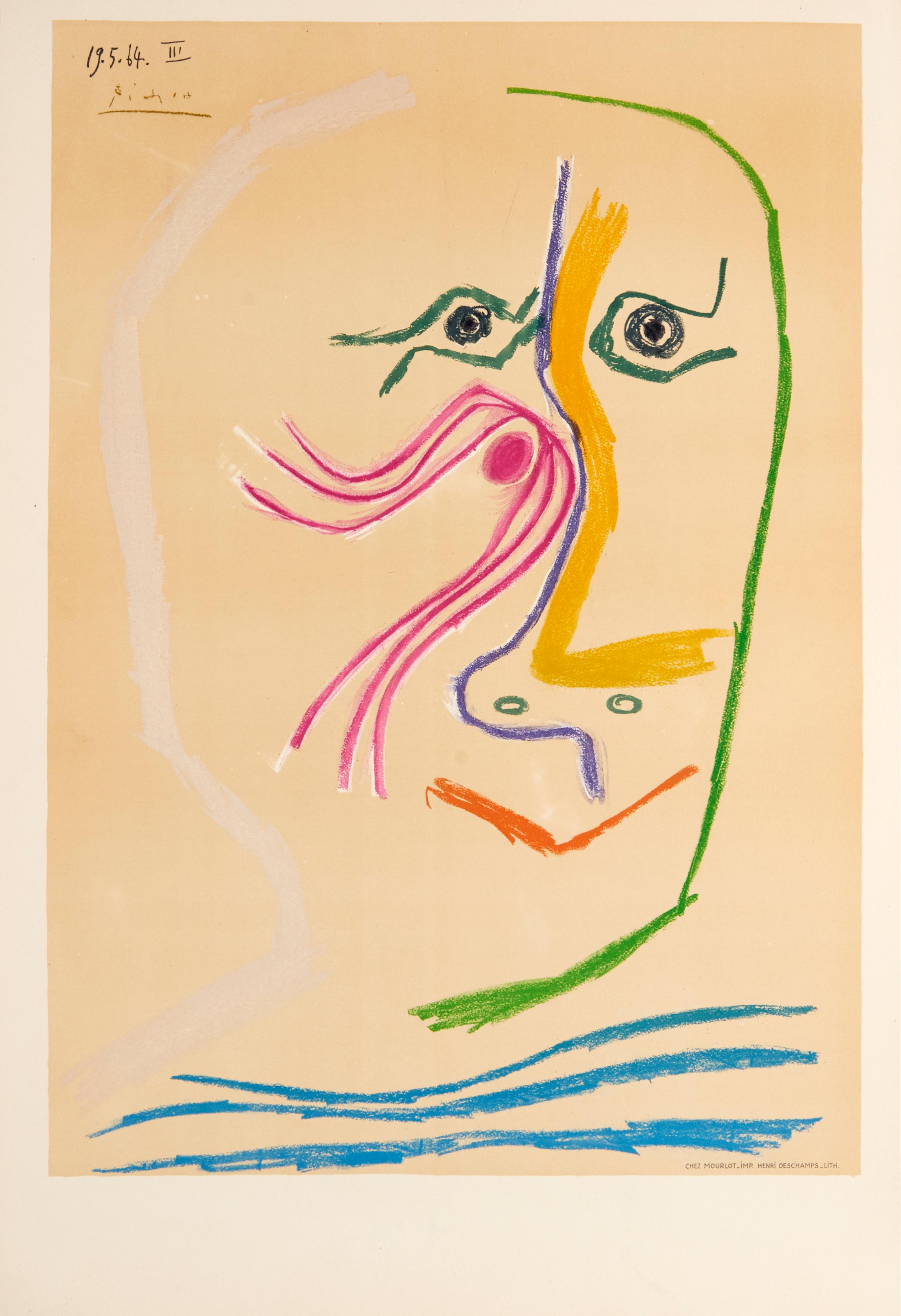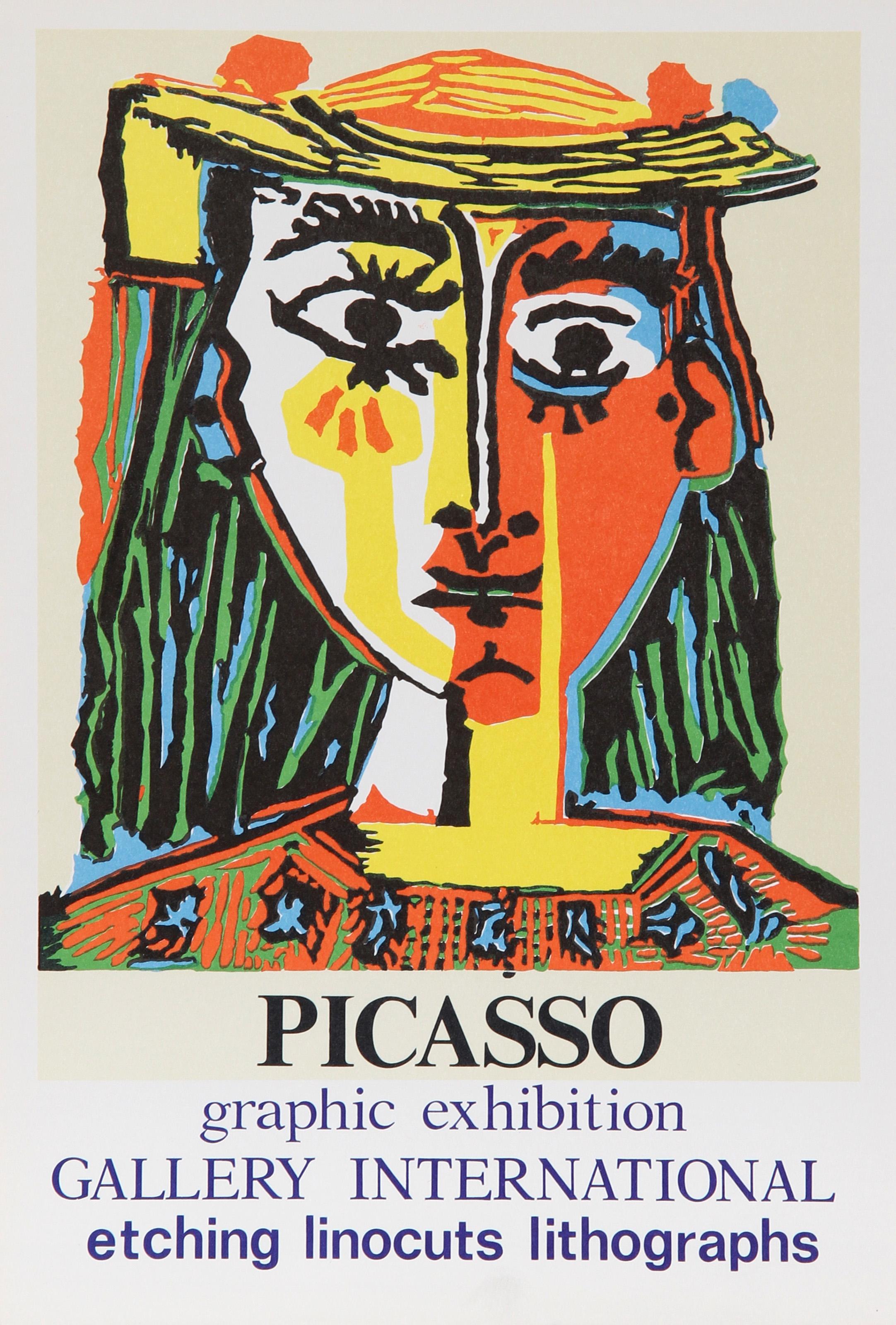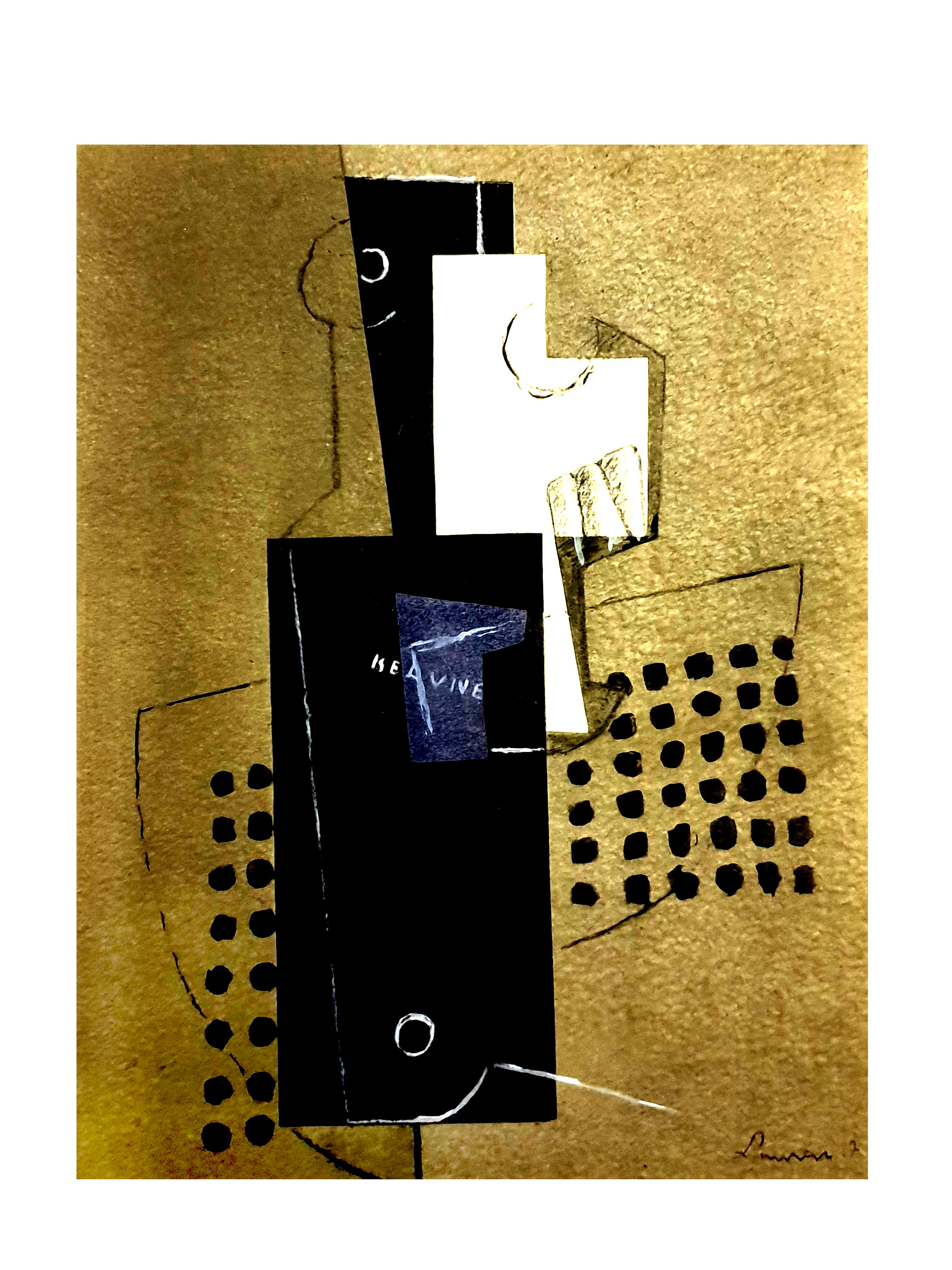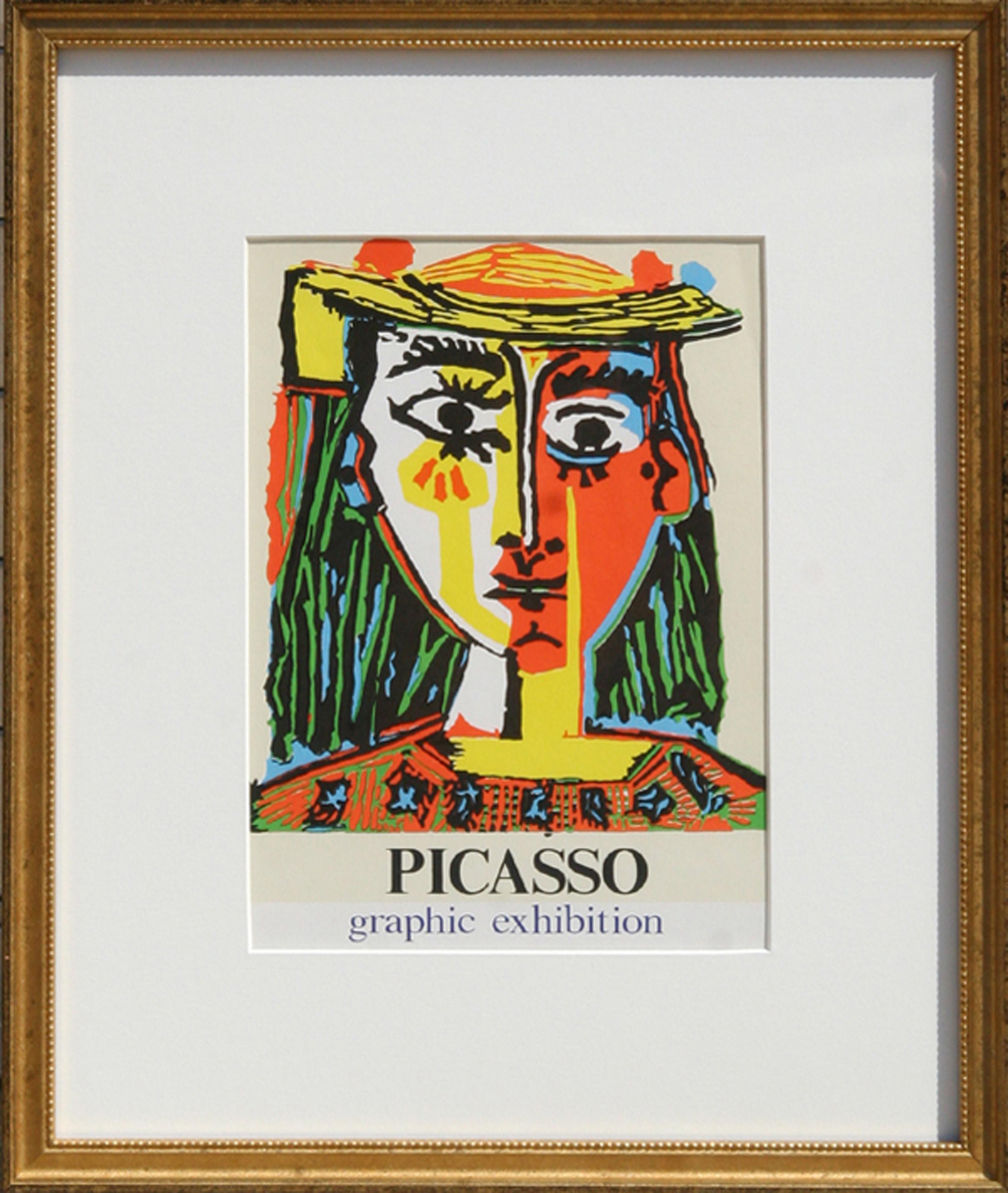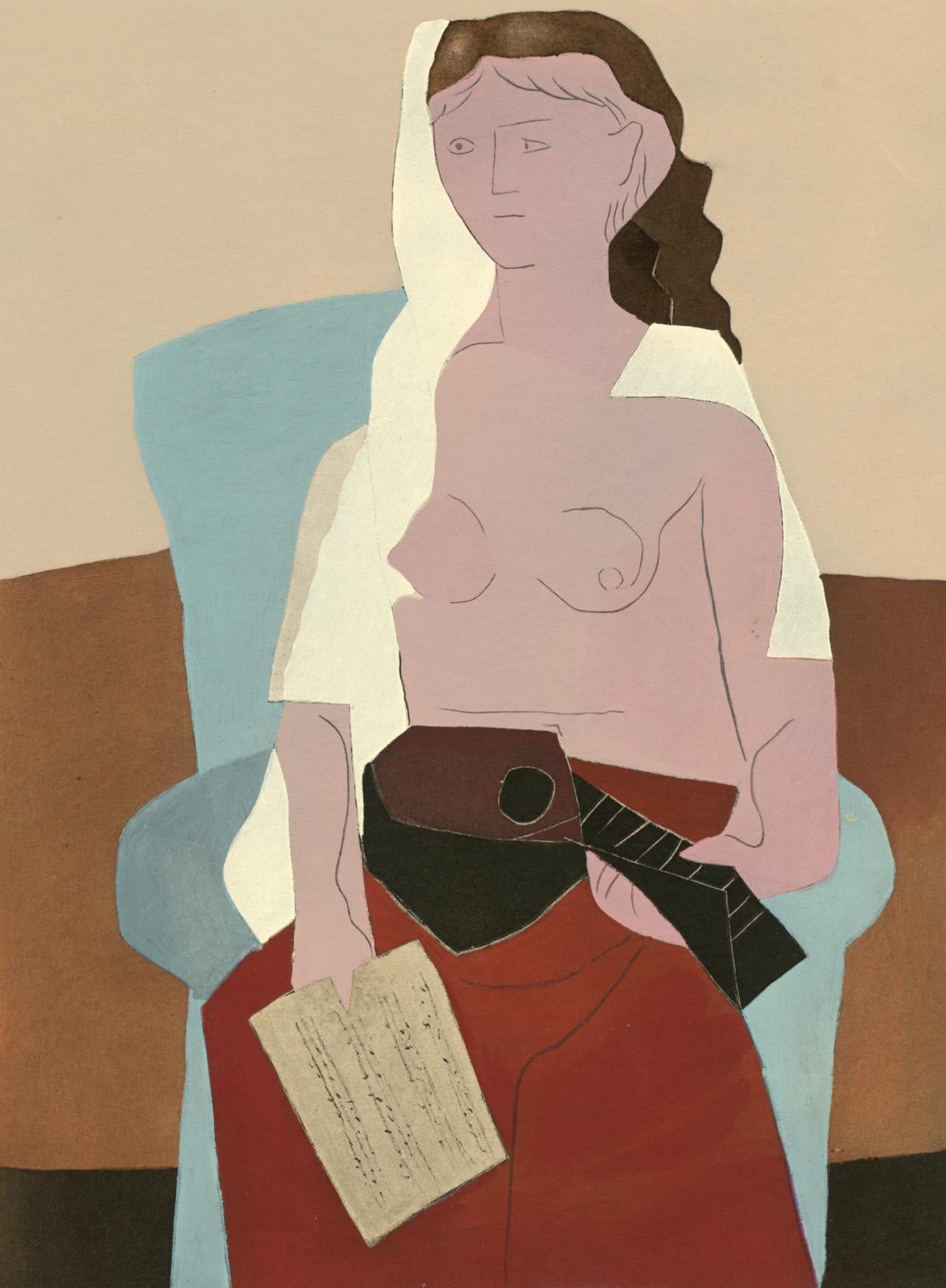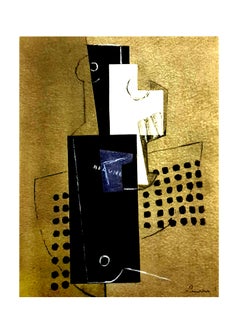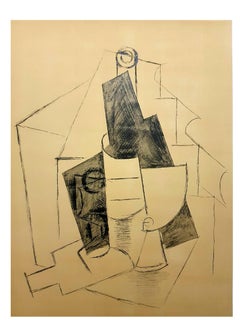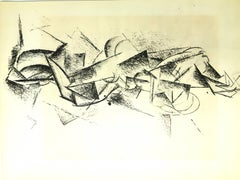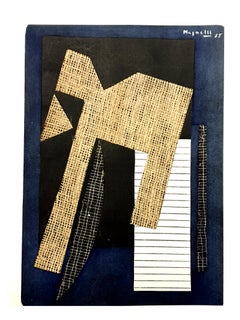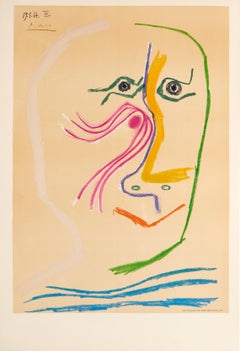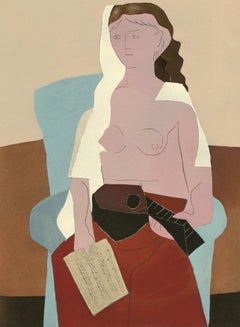Items Similar to "A Poem in Each Book" Exhibition Poster
Want more images or videos?
Request additional images or videos from the seller
1 of 7
"A Poem in Each Book" Exhibition Poster1956
1956
$949.92
£717.91
€800
CA$1,326.96
A$1,443.59
CHF 761.76
MX$17,361.70
NOK 9,609.34
SEK 8,943.01
DKK 6,094.19
About the Item
Exhibition poster for "A Poem in Each Book" by Paul Eluard, illustrated by his friends the painters-engravers, at Maison de la Pensée Française, Paris, October 26 - November 11, 1956
Published by Louis Broder
1000 impressions
Unsigned
Dimensions: 50 x 32.5 cm
Reference: Czwiklitzer 109
- Creation Year:1956
- Dimensions:Height: 19.69 in (50 cm)Width: 12.8 in (32.5 cm)Depth: 0.04 in (1 mm)
- Medium:
- Movement & Style:
- After:Pablo Picasso (1881-1973, Spanish)
- Period:
- Condition:
- Gallery Location:Collonge Bellerive, Geneve, CH
- Reference Number:1stDibs: LU16129469292
About the Seller
4.9
Gold Seller
Premium sellers maintaining a 4.3+ rating and 24-hour response times
Established in 2015
1stDibs seller since 2015
970 sales on 1stDibs
Typical response time: 1 hour
- ShippingRetrieving quote...Shipping from: Collonge Bellerive, Geneve, Switzerland
- Return Policy
More From This Seller
View Allafter Henri Laurens - Cubism - Pochoir
By Georges Braque
Located in Collonge Bellerive, Geneve, CH
after Henri Laurens - Cubism - Pochoir
Published in the deluxe art review, XXe Siecle
1956
Dimensions: 32 x 24 cm
Publisher: G. di San Lazzaro.
Unsigned and unumbered as issued
Category
1950s Modern Figurative Prints
Materials
Stencil
Cubism - Pochoir
By (after) Pablo Picasso
Located in Collonge Bellerive, Geneve, CH
After Pablo Picasso - Cubism - Pochoir
Dimensions: 48.5 x 36 cm
1962
Edition of 260
Daniel Jacomet, LEDA, Editions d'Art
Pablo Picasso
Picasso is not just a man and his work. Picas...
Category
1960s Modern Figurative Prints
Materials
Lithograph
After Pablo Picasso - Cubism - Pochoir
By (after) Pablo Picasso
Located in Collonge Bellerive, Geneve, CH
After Pablo Picasso - Cubism - Pochoir
Dimensions: 48.5 x 36 cm
1962
Edition of 260
Daniel Jacomet, LEDA, Editions d'Art
Pablo Picasso
Picasso is not just a man and his work. Picas...
Category
1960s Modern Figurative Prints
Materials
Lithograph
(after) Alberto Magnelli - Composition - Pochoir
By Alberto Magnelli
Located in Collonge Bellerive, Geneve, CH
(after) Alberto Magnelli - Composition - Pochoir
Conditions: excellent
32 x 24 cm
1957
From XXe siècle, San Lazzaro
Unsigned and unumbered as issued
Category
1950s Abstract Geometric Abstract Prints
Materials
Stencil
Alberto Magnelli (after) - Composition
By Alberto Magnelli
Located in Collonge Bellerive, Geneve, CH
Alberto Magnelli (after)
Untitled (Composition)
Linoleum cut (after the original) on yellow wove paper
32 x 24 cm
1959
From XXe siècle (No. 13)
Published in Paris by San Lazzaro, th...
Category
1950s Abstract Geometric Abstract Prints
Materials
Linocut
(after) Alberto Magnelli - Composition - Pochoir
By Alberto Magnelli
Located in Collonge Bellerive, Geneve, CH
(after) Alberto Magnelli
Untitled (Cubist Composition) after the collage
Pochoir on paper
Conditions: excellent
32 x 24 cm
1956
Printed by Daniel Jacomet for XXe Siecle (issue number...
Category
1950s Abstract Geometric Abstract Prints
Materials
Stencil
You May Also Like
Hommage a Rene Char after Pablo Picasso
By Pablo Picasso
Located in New York, NY
This colorful lithograph after Pablo Picasso was printed by the Atelier Mourlot in Paris in 1964 and is unsigned*. This image is taken from a drawing in pencil and colored chalk enti...
Category
1960s Modern Abstract Prints
Materials
Lithograph
$2,800 Sale Price
20% Off
Graphic Exhibition: Gallery International, Cubist Lithograph after Pablo Picasso
By Pablo Picasso
Located in Long Island City, NY
Pablo Picasso, Spanish (1881 - 1973) - Graphic Exhibition: Gallery International. Year: circa 1975, Medium: Lithograph Poster, Size: 13 in. x 9 in. (33.02 cm x 22.86 cm), Reference: ...
Category
1970s Cubist Portrait Prints
Materials
Lithograph
Graphic Exhibition: Gallery International, Cubist Lithograph after Pablo Picasso
By Pablo Picasso
Located in Long Island City, NY
Pablo Picasso, Spanish (1881 - 1973) - Graphic Exhibition: Gallery International. Year: circa 1975, Medium: Lithograph Poster, Size: 13 in. x 9 in. (33.02 cm x 22.86 cm), Frame Size:...
Category
1970s Cubist Portrait Prints
Materials
Lithograph
Pablo Picasso, Woman with Mandolin, from Chroniques du Jour, 1930 (after)
By Pablo Picasso
Located in Southampton, NY
This exquisite lithograph and pochoir after Pablo Picasso (1881–1973), titled Femme à la mandoline (Woman with Mandolin), from the album, Pablo Picasso, 1930, originates from the 193...
Category
1930s Cubist Figurative Prints
Materials
Lithograph, Stencil
$2,396 Sale Price
20% Off
Free Shipping
Pablo Picasso, Portrait of Jacqueline, from The Double Flute, 1967 (after)
By Pablo Picasso
Located in Southampton, NY
This exquisite lithograph and pochoir after Pablo Picasso (1881–1973), titled Portrait de Jacqueline (Portrait of Jacqueline), from the folio Picasso, La flute double, 16 Dessins, Aq...
Category
1960s Cubist Figurative Prints
Materials
Lithograph, Stencil
$2,636 Sale Price
20% Off
Free Shipping
Picasso, Pour Roby, Noir (Bloch 680; Cramer 57), L'Âge de Soleil (after)
By Pablo Picasso
Located in Southampton, NY
Engraving on vélin d’Arches paper. Unsigned and unnumbered, as issued. Good condition. Notes: From the folio, L'Âge de Soleil, 1950. Published by Robert J. Godet, Paris; rendered by ...
Category
1950s Modern Landscape Prints
Materials
Engraving
$1,436 Sale Price
20% Off
Free Shipping
